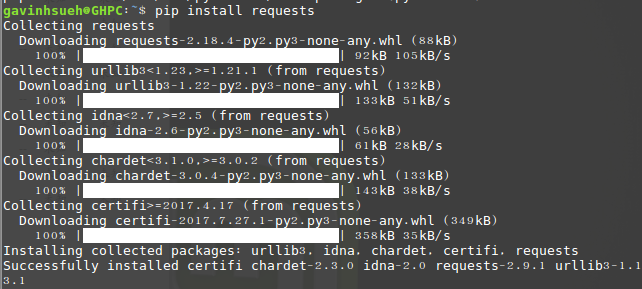Python爬虫框架Scrapy实例代码
目标任务:爬取腾讯社招信息,需要爬取的内容为:职位名称,职位的详情链接,职位类别,招聘人数,工作地点,发布时间。
一、创建Scrapy项目
scrapy startproject Tencent
命令执行后,会创建一个Tencent文件夹,结构如下
二、编写item文件,根据需要爬取的内容定义爬取字段
# -*- coding: utf-8 -*- import scrapy class TencentItem(scrapy.Item): # 职位名 positionname = scrapy.Field() # 详情连接 positionlink = scrapy.Field() # 职位类别 positionType = scrapy.Field() # 招聘人数 peopleNum = scrapy.Field() # 工作地点 workLocation = scrapy.Field() # 发布时间 publishTime = scrapy.Field()
三、编写spider文件
进入Tencent目录,使用命令创建一个基础爬虫类:
# tencentPostion为爬虫名,tencent.com为爬虫作用范围 scrapy genspider tencentPostion "tencent.com"
执行命令后会在spiders文件夹中创建一个tencentPostion.py的文件,现在开始对其编写:
# -*- coding: utf-8 -*-
import scrapy
from tencent.items import TencentItem
class TencentpositionSpider(scrapy.Spider):
"""
功能:爬取腾讯社招信息
"""
# 爬虫名
name = "tencentPosition"
# 爬虫作用范围
allowed_domains = ["tencent.com"]
url = "http://hr.tencent.com/position.php?&start="
offset = 0
# 起始url
start_urls = [url + str(offset)]
def parse(self, response):
for each in response.xpath("//tr[@class='even'] | //tr[@class='odd']"):
# 初始化模型对象
item = TencentItem()
# 职位名称
item['positionname'] = each.xpath("./td[1]/a/text()").extract()[0]
# 详情连接
item['positionlink'] = each.xpath("./td[1]/a/@href").extract()[0]
# 职位类别
item['positionType'] = each.xpath("./td[2]/text()").extract()[0]
# 招聘人数
item['peopleNum'] = each.xpath("./td[3]/text()").extract()[0]
# 工作地点
item['workLocation'] = each.xpath("./td[4]/text()").extract()[0]
# 发布时间
item['publishTime'] = each.xpath("./td[5]/text()").extract()[0]
yield item
if self.offset < 1680:
self.offset += 10
# 每次处理完一页的数据之后,重新发送下一页页面请求
# self.offset自增10,同时拼接为新的url,并调用回调函数self.parse处理Response
yield scrapy.Request(self.url + str(self.offset), callback = self.parse)
四、编写pipelines文件
# -*- coding: utf-8 -*-
import json
class TencentPipeline(object):
"""
功能:保存item数据
"""
def __init__(self):
self.filename = open("tencent.json", "w")
def process_item(self, item, spider):
text = json.dumps(dict(item), ensure_ascii = False) + ",\n"
self.filename.write(text.encode("utf-8"))
return item
def close_spider(self, spider):
self.filename.close()
五、settings文件设置(主要设置内容)
# 设置请求头部,添加url
DEFAULT_REQUEST_HEADERS = {
"User-Agent" : "Mozilla/5.0 (compatible; MSIE 9.0; Windows NT 6.1; Trident/5.0;",
'Accept': 'text/html,application/xhtml+xml,application/xml;q=0.9,*/*;q=0.8'
}
# 设置item——pipelines
ITEM_PIPELINES = {
'tencent.pipelines.TencentPipeline': 300,
}
执行命令,运行程序
# tencentPosition为爬虫名 scrapy crwal tencentPosition
使用CrawlSpider类改写
# 创建项目
scrapy startproject TencentSpider
# 进入项目目录下,创建爬虫文件
scrapy genspider -t crawl tencent tencent.com
item等文件写法不变,主要是爬虫文件的编写
# -*- coding:utf-8 -*-
import scrapy
# 导入CrawlSpider类和Rule
from scrapy.spiders import CrawlSpider, Rule
# 导入链接规则匹配类,用来提取符合规则的连接
from scrapy.linkextractors import LinkExtractor
from TencentSpider.items import TencentItem
class TencentSpider(CrawlSpider):
name = "tencent"
allow_domains = ["hr.tencent.com"]
start_urls = ["http://hr.tencent.com/position.php?&start=0#a"]
# Response里链接的提取规则,返回的符合匹配规则的链接匹配对象的列表
pagelink = LinkExtractor(allow=("start=\d+"))
rules = [
# 获取这个列表里的链接,依次发送请求,并且继续跟进,调用指定回调函数处理
Rule(pagelink, callback = "parseTencent", follow = True)
]
# 指定的回调函数
def parseTencent(self, response):
for each in response.xpath("//tr[@class='even'] | //tr[@class='odd']"):
item = TencentItem()
# 职位名称
item['positionname'] = each.xpath("./td[1]/a/text()").extract()[0]
# 详情连接
item['positionlink'] = each.xpath("./td[1]/a/@href").extract()[0]
# 职位类别
item['positionType'] = each.xpath("./td[2]/text()").extract()[0]
# 招聘人数
item['peopleNum'] = each.xpath("./td[3]/text()").extract()[0]
# 工作地点
item['workLocation'] = each.xpath("./td[4]/text()").extract()[0]
# 发布时间
item['publishTime'] = each.xpath("./td[5]/text()").extract()[0]
yield item
总结
以上所述是小编给大家介绍的Python爬虫框架Scrapy实例代码,希望对大家有所帮助,如果大家有任何疑问欢迎给我留言,小编会及时回复大家的!



